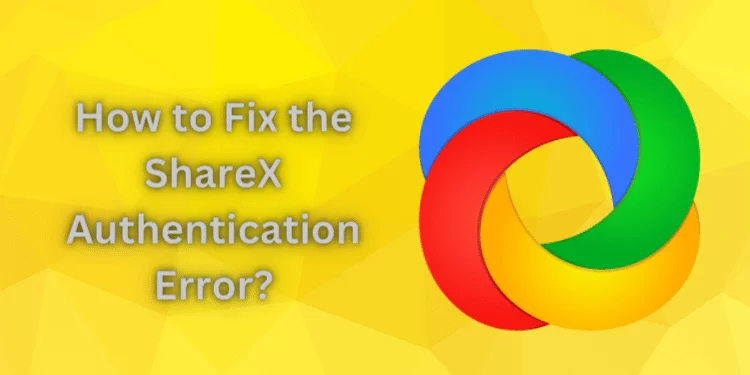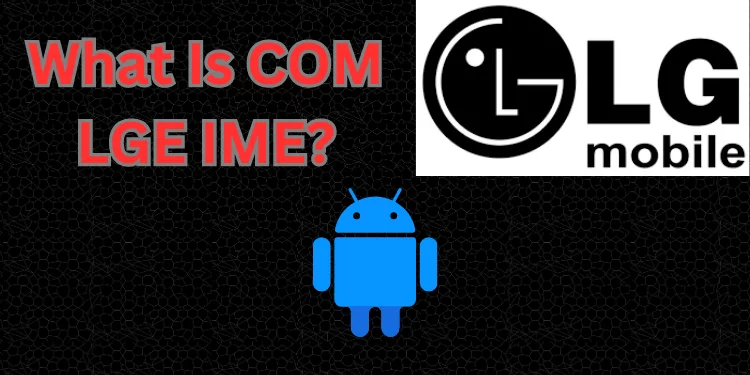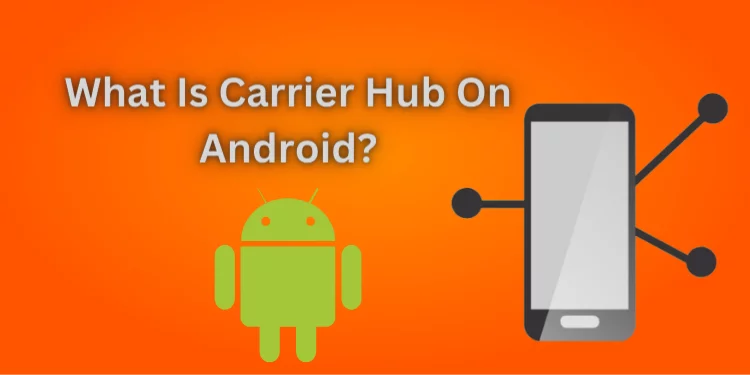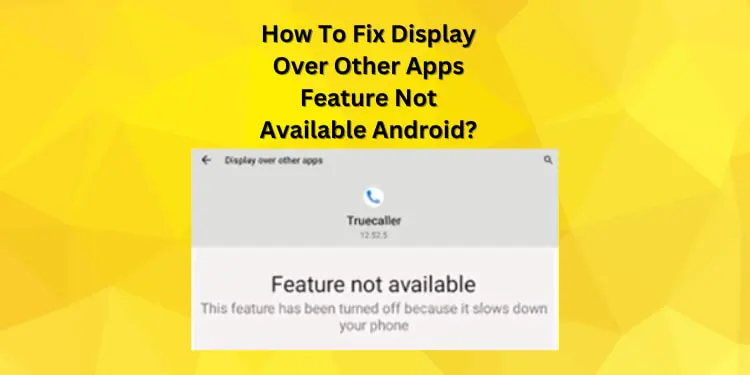The Number You Have Dialed Is Unallocated [Fixed 2025]
Have you ever received a suspicious call and heard an automatic voice state, “The number you have dialed is unallocated”? It’s a confusing message that makes you question the call and its meaning. This article delves into the “unallocated” phone number’s enigmatic world and explores why such messages are encountered.
Brace yourself for an intriguing journey that unravels the secrets of disconnected lines and the cryptic tales they hold.
Understanding “The Number You Have Dialed Is Unallocated” Message
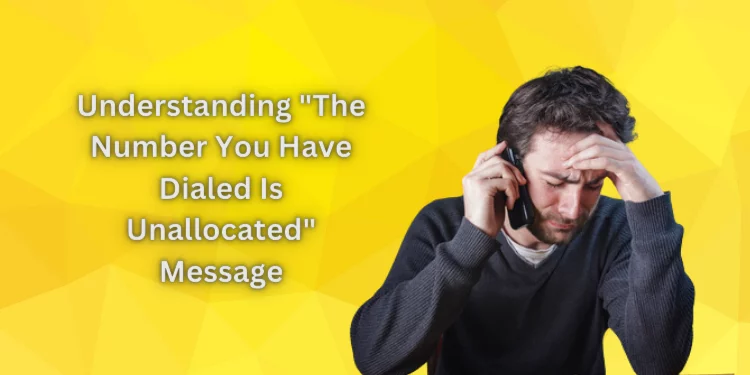
“The number you have dialed is unallocated” indicates that your phone number does not exist or has been disconnected.
Puzzling Encounter
Wrong number In the world of telecommunication, a wrong number refers to dialing a phone number that does not correspond to the intended recipient. If you hear, “The number you have dialed is unallocated,” you probably dialed a wrong or non-existent number.
Simply transposing digits or forgetting the number can cause this. It can also happen when attempting to reach a number that has been reassigned or discontinued.
Unallocated Numbers
A Vanishing Act Unallocated numbers are phone numbers not assigned to any specific customer or device. Telecommunication carriers may hold these numbers, but they need to be operational.
When a new phone number range is introduced, or a customer cancels service, their number becomes available for reassignment.
Cryptic Message
Unallocated Number “The number you have dialed is unallocated” is an automated message the telecommunication network generates when a call is made to an unassigned or non-existent phone number.
The dialed number is not operational. It informs the caller that their number has yet to be assigned to a subscriber or device.
Intercepted Communications
The Intercept Message When you encounter the message “The number you have dialed is unallocated,” it signifies that your call has been intercepted and prevented from reaching its intended destination.
Intercept messages are automated responses triggered by the telecommunication network when certain conditions are met.
In the case of unallocated numbers, the intercept message is generated to inform the caller that the dialed number does not exist within the active network and cannot be connected.
Demystifying Automation
The Automatic Message The automated voice delivering the unallocated number message is part of a system designed to handle and manage phone calls.
Automation is crucial in telecommunications, allowing for efficient call routing, message delivery, and error handling.
In the case of unallocated numbers, the automatic message is triggered when the network detects that the dialed number does not correspond to an active line. It quickly and uniformly informs callers of the number’s status.
Frustrating Outcome
Error Message When you receive the message “The number you have dialed is unallocated,” it can be frustrating, especially if you are trying to reach someone important or expecting an important call.
The error message indicates that the call cannot be completed because your dialed number has not been allocated to any active service or customer. Possible reasons for encountering this error message include:
- Dialing the wrong number.
- Attempting to reach a disconnected line.
- Encountering temporary network issues that prevent the connection.
Understanding the concept of wrong numbers, unallocated numbers, intercept messages, and automation provides insight into the telecommunication world.
The next time you encounter this enigmatic message, you can approach it with a clearer understanding of its origins and implications.
Dialing the correct and valid phone number is essential for establishing successful connections. Knowing the potential for unallocated numbers can help you navigate the telecommunication landscape more effectively.
Exploring the Causes of Unallocated Phone Numbers
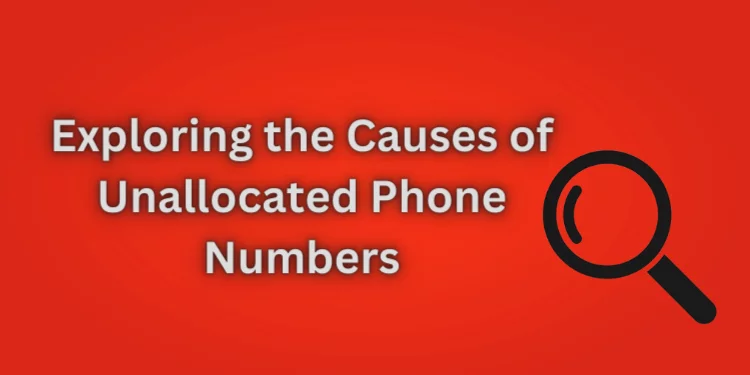
Unallocated phone numbers – those elusive digits that vanish into thin air when you dial them. From network issues and expired numbers to billing complications and fraudulent activities, we delve into the complexities behind these unallocated phone numbers.
Google Voice Factor
Obtaining a Phone Number, Google Voice allows users to get a phone number, making and receiving calls using various devices. However, changes in Google Voice services or settings can sometimes make numbers unallocated.
For example, if Google discontinues a particular service or alters its offerings, phone numbers associated with those services may become unallocated.
Additionally, if users adjust their Google Voice settings, such as disabling or deleting a phone number, it can lead to its unallocation.
Network Provider Woes
Temporary Network Issues Network providers are vital in allocating and maintaining phone numbers. Temporary network issues, such as technical glitches, maintenance activities, or system upgrades, can disrupt the allocation process and render numbers unallocated.
These issues can arise from network infrastructure malfunctions, software bugs, or external factors like severe weather conditions.
When such issues occur, numbers may temporarily become unallocated until the network stabilizes and the allocation process resumes.
Service Provider Shuffle
Out-of-Service Numbers Service providers manage and oversee phone services for their customers.
When clients cancel services, terminate accounts, or change plans, their phone numbers may become “out of service.”
Unallocated numbers are now allotted to customers or devices. Service providers can use these numbers for new clients or other active accounts by unallocating them.
Frailty of Network Signals
Network Issues and Unallocated Numbers Network signals are the backbone of modern communication infrastructure. However, network issues can disrupt the allocation and connectivity of phone numbers, leading to their unallocation.
Problems such as poor signal strength, disruptions in network coverage, or system failures can prevent proper call routing and result in numbers becoming unallocated.
These network issues can arise from technical faults, hardware failures, or external factors interfering with signal transmission.
Ticking Clock
Expired Numbers and Unallocation Phone numbers have a finite lifespan, and when they expire, they can become unallocated.
Number expiration can occur due to various reasons, such as extended periods of inactivity, account closures, or specific policies implemented by telecommunication authorities.
To maintain efficient allocation and ensure the availability of active phone numbers, providers may choose to reclaim expired numbers and mark them as unallocated until they undergo a new allocation process.
Billing Bumps
Unallocated Numbers and Billing Issues Billing issues can have unintended consequences, including numbers being marked as unallocated. Unpaid bills, unresolved payment disputes, or billing errors can lead to numbers becoming unallocated.
When customers fail to fulfill their financial obligations or encounter billing discrepancies, service providers may temporarily or permanently unallocated the associated numbers. This ensures that resources are not wasted on inactive or financially delinquent accounts.
Guarding Against Fraud
Fraudulent Numbers and Unallocation Fraudulent activities pose a significant threat to the integrity of the telecommunication system. To protect against fraud, service providers actively monitor and investigate suspicious account activities.
If unauthorized use, illicit practices, or fraudulent account activities are detected, service providers may unallocated the associated phone numbers. This prevents further misuse and protects the network and its users from harm.
Troubled Networks
Unallocated Numbers and Network Problems Network problems, such as infrastructure malfunctions, natural disasters, or system upgrades, can disrupt the allocation and connectivity of phone numbers.
When network issues arise, they can temporarily interrupt the allocation process, resulting in numbers becoming unallocated.
These issues may require time to resolve as technicians work to address technical faults, repair damaged infrastructure, or upgrade network systems. Once the network problems are resolved, the allocation process can resume, and numbers can be reactivated.
Unallocated phone numbers may appear to be enigmatic entities, but they are often the result of a combination of factors and circumstances.
From issues related to Google Voice settings to network provider complications, billing problems, and fraudulent activities, these causes shed light on the mystery behind unallocated phone numbers.
By understanding the various factors, we can navigate the ever-evolving landscape of phone numbers, ensuring better connectivity and communication experiences.
Whether it’s network glitches, billing discrepancies, or protection against fraud, the unallocation of phone numbers is necessary to maintain the telecommunication system’s efficiency and security.
What Happens When You Encounter an Unallocated Number?
When you encounter an unallocated number, it can leave you with a few details and raise questions about the situation. Since the number is unallocated, call logs and contact information may need to be updated.
You may have a missed call from the same unallocated number, and When you called back, you got the same message indicating the number was unallocated. You may wonder what to do.
A helpful starting point could be to check Google Voice settings if you are using that service, as it might offer insights into any configuration issues that could lead to unallocated numbers.
Alternatively, contacting your carrier network provider or telephone company for guidance can help you understand the situation better.
Unallocated numbers can be a part of our day-to-day experience, and encountering them can sometimes be puzzling. However, with the right resources and a recovery page to refer to, you can navigate these situations more clearly and clearly.
Protecting Yourself from Potential Scams Related to Unallocated Numbers
In the digital age, protecting yourself from potential scams related to unallocated numbers is essential. Caller ID spoofing is a common technique scammers use to make it appear that a call originates from a legitimate source.
The spoofed number is often used for spam phone numbers, bombarding unsuspecting individuals with unsolicited calls.
Tolerating spam calls from such people can be frustrating, especially when the number seems familiar, or the software generates numerous calls quickly. To protect yourself, it’s important to be aware of essential tips.
Firstly, never provide personal or financial information over the phone, especially if the caller’s intentions seem suspicious.
Secondly, keep track of unpaid bills to ensure you’re not falling victim to a scam disguised as a collection call. If you suspect fraudulent activity, contact your mobile operator and report the specific customer or number involved.
Remember, legitimate companies rarely use unallocated numbers for marketing, promotional, or advertising purposes, so staying vigilant and trusting your instincts when it comes to unsolicited calls is crucial for maintaining your security.
Role of Telecommunication Providers in Allocating Phone Numbers
In the intricate world of telecommunication, the role of providers in allocating, including an unallocated phone number, is vital.
The number administrator, typically managed by telecommunication companies, is the key to allocating and managing phone numbers.
These providers handle various tasks, such as processing Google reports, assigning unique phone numbers, and ensuring the proper functioning of the phone number system.
When users dial a phone number, they must enter each digit correctly to reach the intended destination. A technical reason, such as system limitations or network constraints, can sometimes lead to unallocated phone numbers.
However, most companies make concerted efforts to allocate and assign phone numbers efficiently, going through several rounds of verification and assignment processes.
Their role is to ensure that assigned numbers are accessible and connected, facilitating seamless calling and receiving calls for individuals and businesses alike.
With their expertise, telecommunication providers play a pivotal role in shaping the interconnectedness of our modern communication landscape, ensuring that assigned phone numbers are accurately and reliably connected.
Investigating Unallocated Phone Numbers: Can They Be Traced?
Investigating the unallocated phone number can be fascinating as we delve into the mysteries behind these seemingly disconnected digits.
When encountering the message “The number you have dialed is unallocated,” it may leave us wondering about the origins of such numbers and whether they can be traced.
Phone bills can provide valuable clues, as they may reveal patterns of usage or charges associated with the out-of-service number.
The above-mentioned message, though common, can also provide hints about the unallocated status. Tracing an unallocated phone number can take a lot of work.
Still, if the number was previously registered or associated with a specific customer, there may be a chance of finding further information.
Promotional numbers saved contacts, or those used for marketing purposes might have left a trail, offering potential leads.
However, unallocated numbers may not be listed in traditional directories or databases, making investigation trickier.
A network issue or technical difficulties can sometimes lead to numbers becoming unallocated, and encountering such situations can sound familiar to those who have experienced similar connectivity challenges.
To navigate the unallocated list effectively, specialized resources and expertise in tracing unlocated numbers are essential.
By leveraging advanced techniques and databases, investigators can uncover the hidden details behind unallocated numbers, shedding light on their purpose, history, and the individuals or organizations behind them.
How do I get a Google Voice phone number?
Google Voice numbers are easy to get; first, create a Google Voice account. Once logged in, navigate to the Google Voice settings page to explore the various options and features available.
Here, you can customize your phone number that sounds familiar or resonates with your personal or business brand.
Whether you want a registered number for a professional touch, a promotional number for marketing purposes, or even a link to a saved contact,
Google Voice offers the flexibility to cater to your specific needs. So, remember to correctly type in your preferences and create a unique and catchy Google Voice phone number that suits your style.
With Google Voice, you’ll enjoy seamless communication, call management, and the convenience of having a dedicated phone number for your desired promotional purposes.
Say goodbye to the limitations of traditional phone lines and embrace the power of Google Voice. Get your Google Voice phone number today and unlock a world of communication possibilities.
FAQs
What is a “The Number You Have Dialed Is Unallocated” message on my phone bill?
Answer: The message indicates that you attempted to call an unallocated number, which means the number you dialed is not assigned to any active service.
What does it mean when I encounter an unlocated number?
Answer: An unlocated number is a phone number not associated with any specific location or service. It may be unallocated or temporarily out of service.
Why am I receiving the “The Number You Have Dialed Is Unallocated” message frequently?
Answer: Receiving the message frequently could indicate that you dial incorrect or non-existent numbers or may encounter technical issues or network problems resulting in unallocated numbers.
Can I trace an unallocated phone number mentioned on my phone bill?
Answer: Tracing an unallocated number mentioned on your phone bill can be challenging since unallocated numbers are typically not assigned to any active service. They may not have associated details or a specific location, making tracing their origin or purpose difficult.
What is an unassigned number?
Answer: Unassigned phone numbers are not assigned to anyone or anything. It’s unused in the phone number pool and belongs to someone else.
What does the message “The number you have dialed does not exist” mean?
Answer: The message “The number you have dialed does not exist” indicates that the specific phone number you dialed is invalid or does not correspond to an active line or service. It could be due to entering an inaccurate number, dialing a non-existent number, or a technical issue that stops the call from reaching its destination.
Conclusion
Encountering the message “The Number You Have Dialed Is Unallocated” can be a perplexing experience, leaving us wondering about the reasons behind unallocated numbers and their implications. The automated response serves as a reminder that not all phone numbers are actively assigned to a service or customer, and various factors may be at play, such as network issues, wrong numbers, or temporary unavailability.
However, How can we navigate this landscape of unallocated numbers with greater ease and understanding? Can advancements in technology and telecommunication systems provide solutions to minimize the occurrence of unallocated numbers?
As digital communication evolves, it’s important to streamline the allocation process and improve phone number accuracy and availability.
By addressing the challenges associated with unallocated numbers, we can strive for a future where every dialed number connects us to our intended destination.


